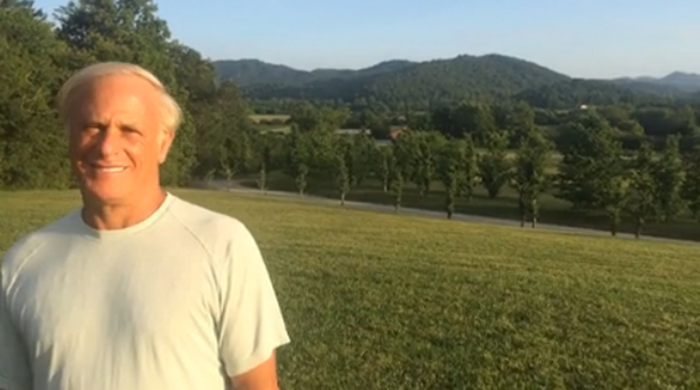Important new research at the Ric Scalzo Institute shows the anti-viral value of herbs on coronavirus.

Provocative new research has shown that a combination of botanical herbs kills SARS-CoV-2 cells, which cause COVID-19—the reason for today's global pandemic.
The groundbreaking toxicity and efficacy work showed the combination of herbs, most of them from the Traditional Chinese Medicine tradition, works on different mechanisms of action to each bolster the overall effect. In sum, the herbs prevent most coronavirus cells from entering human cells and then work in different ways to kill off those that do make it into the cells.
“The real interesting part is we took Dr. Langland's knowledge of vaccine development and referred primarily to traditional botanical medicine practitioners and literature as part of the process to guide the selection of the plants used in formulation,” said Bill Chioffi, vice president of strategic partnerships and business development at the Ric Scalzo Institute for Botanicals Research at the Southwest College of Naturopathic Medicine in Tempe, Ariz., where the research was conducted. “These herbs have low toxicity and a high level activity against viral replication at relatively low amounts.”
The work started by assaying more than 40 herbs at Arizona State Biosecurity Level 3 labs to narrow down the number with demonstrated safety and efficacy. Patents were then filed on the successful combinations.
“Herbalists traditionally combine plants together as opposed to using single plants,” said Jeffrey Langland, Ph.D., a professor at the Southwest College who led the research effort. “Combining herbs that hit the same mechanism of action could limit the eventual results in an in vitro model.”
Langland said his research team at the front end also looked at how pharmaceuticals are used to treat HIV—there is no drug cure for that disease, but rather a cocktail of different drugs each target a different aspect of the disease, which enables patients to continue to live with the disease.
The astonishing research actually shows safety and efficacy against the cause of the global pandemic that has affected every corner of human life for the past year.
The work ahead
One obvious roadblock, which is nonetheless a happy occurrence for humanity around the globe, is the invention and dissemination of vaccines against COVID-19. Does that mean this botanical formulation is a day late and a dollar short?
“I don’t think so,” said Chioffi. “Dr. Langland is continuing to do in vitro assays on the formulations and to expand the scope to include bioassays for activity against replication of infleunza-type virus as well as rhinovirus and other coronavirus types. Since these herbs are grounded in traditional use for similar types of conditions, they could be part of a proprietary blend."
As veterans of the supplements regulatory structure would know, supplements cannot claim to “prevent, cure or treat” any disease. Under the governing legislation around supplements, the 1994 Dietary Supplements Health and Education Act (DSHEA), supplements can use only “structure/function” language. So despite research showing these herbal combinations can indeed fight off the novel coronavirus that leads to the COVID-19 disease, the company marketing this formulation could only state a general immune function structure/function claim along the lines of “Supports immune function.”
Langland has done lab work at the Ric Scalzo Institute using other botanicals for other viral conditions in addition to the work he does at the BSL3 labs at ASU. He has filed patents for this work.
This includes botanical support against herpes simplex and human papilloma.
There remains additional work on these blends of herbs that target the SARS CoV2, the virus that causes COVID-19. Next will be to identify the mechanism of action of each herb, isolating the active constituents, moving into clinical trials, then looking for a manufacturer that can make the formula and manage the supply chain in a sustainable manner.
“The initial results show direct anti-viral activity in vitro, but we cannot make those claims,” said Chioffi. "We have to abide by FDA guidelines, but we want to move forward with further development and eventually move from the in vitro work into a clinical setting.”
That also leaves open the possibility of going the botanical drug development route.
“If a company wanted to develop something into a botanical drug based on that patented formula,” said Chioffi, “we have examples already of four different Botanical Drug Products on the market.”
That company would then have additional work to do on the supply chain and manufacturing process in addition to much more work on toxicity and safety testing with epidemiological studies.
“It is much more complex to get transparency through the supply chain from raw material to finished botanical drug product,” said Chioffi. “You need complete traceability. You have to develop the supply chain on the botanicals.”
Langland said human clinical trials are needed, including on variants of the virus, but the herbs are all generally recognized as safe (GRAS) and have been used traditionally for immune support.
The herbs at the Ric Scalzo Institute
The team at the Ric Scalzo Institute has patented the three combinations of four herbs. Each of the three combinations includes the Middle Eastern herb black calla lily (Arum palaestinum), the TCM and culinary herb known as chameleon plant or fresh mint (Houttuynia cordata) and Chinese skullcap (Scutellaria baicalensis). Then, the first formulation adds the perennial mum (Chrysanthemum indicum), the second adds the tea plant (Camellia sinensis), the third the TCM herb known as Danshen or red sage (Salvia miltiorrhiza).
Arum may block 90 percent of the virus from entering the cell, explained Langland at a webinar that covered a half-dozen topics related to botanical research being conducted at the Ric Scalzo

Institute. That virus that does bypass arum and enters the cell gets targeted by chrysanthemum, and that could kill 90 percent of what’s left. Then scutellaria,and then then the remaining virus gets hit by houttuynia.
“Nothing works 100 percent,” said Langland. “But with our methodology, first we block 90 percent, then another 90 percent, and so on. Each botanical targets a different aspect. It’s what putting science behind botanicals can do for the therapeutic industry.”
The specific actions identified thus far include targeting the coronavirus attachment onto cell walls, then targeting things like viral transcription, enzymes in the replication process and protein processing.
“We are understanding how these botanicals work,” said Langland. “Our goal is to target different aspects of the replication process.”
The patent is based on the botanical formulation that is synergistically active about preventing the replication of SARS-coV2.
Scalzo is founder and former President/CEO of the Gaia Herbs supplement brand. Scalzo and Gaia have had a longstanding relationship going back to 2001 with the Southwest College of Naturopathic Medicine. Two years ago Scalzo gave a philanthropic gift to the school, which was used to create the Ric Scalzo Institute for Botanical Research.
The institute performs analytical testing, cellular and molecular biology assays, and metabolomic testing, complemented by pilot clinical trials. That work, in collaboration with other academic institutions and companies in the natural products industry, will develop new products and improve existing formulations, isolate and identify novel plant compounds for development as pharmaceuticals, and develop FDA-approved Botanical Drug Products.
About the Author(s)
You May Also Like






.png?width=800&auto=webp&quality=80&disable=upscale)